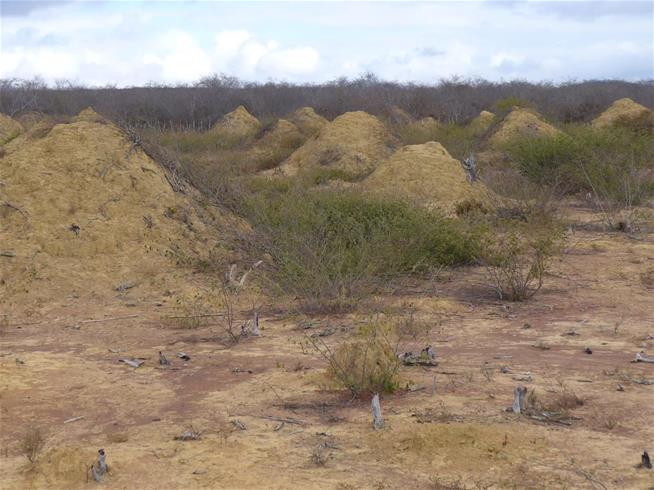
Around the time Egypt’s pyramids were built, another massive project got underway in a different part of the world. And like the pyramids, the resulting site in northeastern Brazil is visible from space today. But there was no ramp or pulley, or even manpower. Rather, as entomologist Stephen Martin explains in a post at Phys.org, the complex of 200 million large mounds of dirt covering an area the size of Great Britain “represents one of the biggest structures built by a single insect species.” He’s referring to termites. The cone-shaped mounds are up to 10 feet high and 30 feet wide, and spaced about 60 feet apart, per Quartz. Scientists date the oldest of them to 3,820 years ago, making them about the same age as the world’s oldest known termite mounds in Africa, reports CNN. As a point of reference, they say the excavated dirt would fill 4,000 Great Pyramids of Giza.
The mounds were formed as one of the world’s largest termite species, Syntermes dirus, “excavated a massive network of tunnels” to reach meals of dead leaves when they fell to the forest floor once a year, Martin says. The tunnels allow termites to cover a lot of ground quickly while providing protection. Note the present tense, as researchers say some mounds remain in use over 88,800 square miles. “It’s incredible that, in this day and age, you can find an ‘unknown’ biological wonder of this sheer size and age still existing, with the occupants still present,” says Martin, whose study was published Monday in Current Biology. Interestingly, though Gizmodo notes the termites can be aggressive, researchers found little evidence of aggression in the mounds, suggesting a cohesive colony.